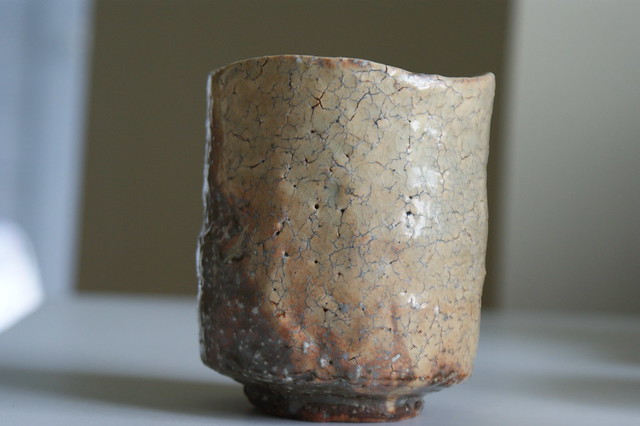
I can not remember how many years ago it was that a Tsuchinohana Yunomi from Mukuhara Kashun first caught my eye. Well needless to say, that one was bought before I could save up the money, and I have been watching them in anticipation ever since, finally for my 25th birthday decided to purchase one. I was asked by someone what caught my eye about this style of piece, and it is something that I struggle to put into words. I could do it in one word, heavily weighted with a multitude of different meanings all buried within. So in one word: impermanence.
Maybe it is the fact that it looks ancient when brand new, looks like one good wind storm or a down poor of rain will cause it to crumble away. Something that is almost the antithesis of flashy, in the sense that you would far more expect to see this cup in a little cave, or hermits hovel, as opposed to a palace, or mansion. While it really is not frail ( though I haven't fully tested that, and I do not intend to any time soon) the appearance is somewhat endearing.

As to the actual details of the piece, incredibly light weight, with a smooth but bumpy texture, from the very sandy clay. As pictured above it has a lovely kiln/glaze effect up one side of the piece, which really highlights all the sand in the clay body. The foot looks a bit small but is nicely carved. Though Mukuhara kashuns chop is so small and such an irregular shape I often have a very hard time discerning it from the standard bumps and cracks in some of his more coarse clay bodies.

The most interesting aspect about this yunomi is how it appears to be riddled with all sorts of very veyr tiny cracks, some large and clearly going through the glaze, and others very very small, and completely covered by the outer glaze,or are perhaps just slight fissures in the outer glaze, revealing the underglaze, but it really gives a very dry and cracked earth appearance to the piece.

No comments:
Post a Comment